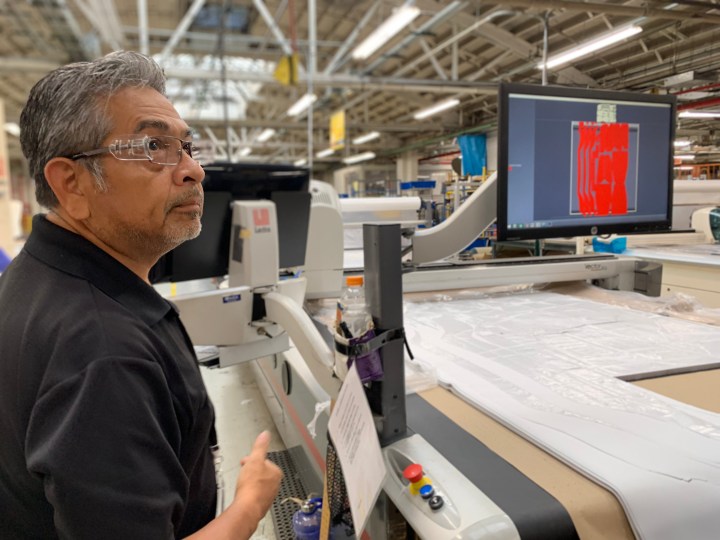
Manufacturing needs workers. Chicago has plenty. Where’s the disconnect?
Manufacturing needs workers. Chicago has plenty. Where’s the disconnect?

Decades ago, manufacturing was king in Chicago. In 1960, more than one third of Chicago area residents worked in the industry. Today, about 11% in the six-county region do.
Meanwhile, the unemployment rate in some Chicago neighborhoods is as high as 30%.
Although many factories in the city have shut down or moved away over the last several decades, manufacturing is not dead. In Chicago and across the country, there are many factory jobs — and some employers are facing a worker shortage.
Companies like Freedman Seating Company in Chicago tout new, high-tech jobs, which they’re having trouble filling.
The first barrier, according to chief executive Craig Freedman, is a skills gap. Although many entry-level jobs in manufacturing don’t require a college degree, workers need solid reading and math skills to read blueprints and run computer-operated machinery.
“Some of the basic skills that you would think, or hope, that the public schools system would handle, is not necessarily [being handled],” Freedman said. He added that many workers lack what he called “soft skills.”
“It’s really work readiness,” he said. “Showing up every day, knowing they have to be here on time, not being on their cell phones while they’re at work.”
Another barrier some Chicagoans face is the distance that separates them from the jobs. According to data from the U.S. Census Bureau, Chicago has about 60,000 manufacturing jobs. The surrounding suburbs, however, have more than 300,000 manufacturing jobs.
“You got jobs over [there], and you got people over here,” said Teresa Córdova, director of the Great Cities Institute at the University of Illinois at Chicago and the author of a report on the mismatch between the jobs and the unemployed workforce in Chicago.

Some nonprofits and manufacturing associations are working to bridge the gap. For example, the Technology and Manufacturing Association in Technology and Manufacturing Association in Schaumburg, Illinois, buses in workers from Chicago to teach them metalworking at its suburban training center. TMA is about 30 miles away from Chicago — almost an hour’s drive in traffic.
“Unfortunately, our transit system … doesn’t do a very good job of moving people through the suburbs,” said Steve Rauschenberger, TMA’s president.
Rauschenberger has suggested that companies hire in pairs so workers can carpool — or even lease a car for employees for a year until they’re in a better place to buy their own.
Córdova supports expanding routes and schedules, and employers providing shuttles from main suburban corridors.
But transportation and the skills gap aside, industry insiders say manufacturing also suffers from an image problem.
“I can see where the PR problem comes from,” Freedman said. “Manufacturing used to be dark and dirty and dingy, and people got hurt all the time in serious injuries.”
Today, he noted, the industry is high-tech, high-skilled and high-paying. According to the U.S. Bureau of Labor Statistics, manufacturing workers earn an average of about $28 per hour. That’s between $8 and $10 dollars more per hour than the average for retail or hospitality service jobs.
“I’ve spent years trying to bang my head, pound my fist, getting that point across that there are solid, middle-class career paths in manufacturing,” Freedman said.
Córdova said that to attract and train more workers in manufacturing, the Chicago area needs a regional industrial policy.
“It needs to be an effort that comes from a range of sectors — it’s gonna take the whole village and more,” she said, adding that government, industry, the education system and nonprofits need to come together to form a comprehensive plan.
There’s a lot happening in the world. Through it all, Marketplace is here for you.
You rely on Marketplace to break down the world’s events and tell you how it affects you in a fact-based, approachable way. We rely on your financial support to keep making that possible.
Your donation today powers the independent journalism that you rely on. For just $5/month, you can help sustain Marketplace so we can keep reporting on the things that matter to you.


















